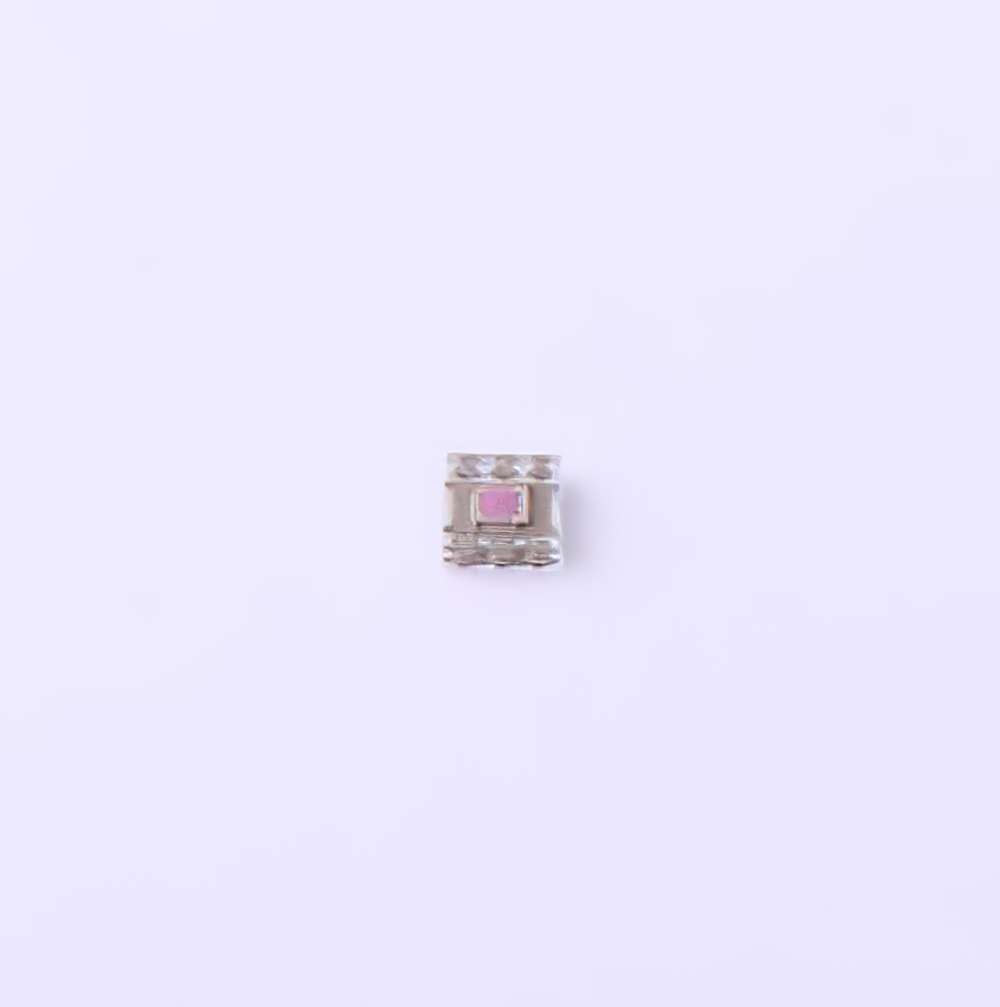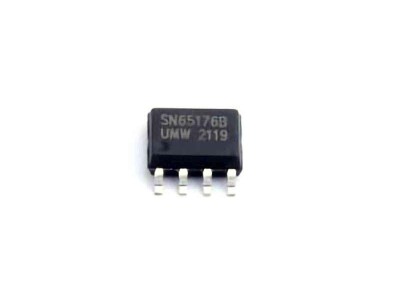
This article explores the application of the OPT3001DNPR light Sensor in modern sensor design, high Lighting its capabilities, features, and real-world case studies. We delve into how this sensor can enhance the performance and efficiency of light-sensitive systems across various industries, making it a preferred choice for smart applications.
Introduction to OPT3001DNPR and Its Role in Light Sensor Design
In an era where smart devices and environmental awareness are becoming essential components of everyday life, light sensors have gained significant traction. These sensors play a pivotal role in a wide range of applications, from energy-efficient lighting systems to advanced IoT networks and environmental monitoring. Among the many light sensors available on the market, the OPT3001DNPR stands out as a versatile and Power ful component, designed to meet the demands of modern sensor systems. In this article, we will explore the application and case analysis of the OPT3001DNPR, focusing on its features, benefits, and real-world use cases in light sensor design.
Overview of the OPT3001DNPR
The OPT3001DNPR is a high-precision light sensor developed by Texas Instruments. It is part of a family of ambient light sensors, engineered for accurate light intensity measurement, with a wide dynamic range and low power consumption. The sensor is typically used for detecting and measuring light intensity in environments ranging from indoor settings like homes and offices to outdoor applications such as street lighting or agricultural systems.
This sensor incorporates an I2C interface for seamless integration with microcontrollers, making it a valuable asset in connected and smart systems. Additionally, it features a range of programmable settings that allow users to tailor the sensor's behavior to specific applications. The ability to measure light across a broad spectrum—from visible light to infrared—makes it suitable for a variety of tasks where precise light detection is crucial.
Key Features of the OPT3001DNPR
The OPT3001DNPR comes equipped with several notable features that enhance its performance in light sensor design:
Wide Dynamic Range: It can measure light intensity from 0.01 lux to 83,000 lux, allowing it to be used in both extremely low-light and bright environments.
Low Power Consumption: The sensor operates with minimal power usage, making it ideal for battery-powered and portable devices, or applications where energy efficiency is key.
Precise Light Measurement: The sensor provides highly accurate light measurements, with a typical error margin of less than 10%. This is crucial in applications that require fine-tuned light sensitivity.
I2C Interface: The sensor communicates with a host system via I2C, making it simple to interface with microcontrollers and other digital systems. This allows for flexible integration into a variety of light-sensitive systems.
Digital Output: Unlike traditional analog light sensors, the OPT3001DNPR outputs digital data, which reduces noise and improves reliability in data transmission.
Applications in Light Sensor Design
The OPT3001DNPR has a broad spectrum of applications due to its robust features. From consumer electronics to industrial systems, its flexibility and precision make it an excellent choice for a wide range of projects. Some of the common applications include:
Smart Lighting Systems: The OPT3001DNPR is often integrated into smart lighting systems where it automatically adjusts the intensity of lights based on ambient light levels. This is commonly seen in offices, homes, and public spaces where energy efficiency is a priority.
Wearables and Health Monitoring: In wearables such as fitness trackers and health-monitoring devices, the OPT3001DNPR can help track light exposure, which is useful for regulating sleep patterns or measuring environmental factors.
Automotive Lighting: In automotive systems, the OPT3001DNPR can be used to control headlights or cabin lighting by detecting the external light conditions and adjusting the lighting system accordingly.
Agricultural and Environmental Monitoring: The sensor can also play a role in monitoring light conditions for crop growth in smart agriculture systems or for environmental monitoring systems that track sunlight exposure in specific regions.
In the next section, we will dive deeper into a few case studies that showcase how the OPT3001DNPR has been successfully deployed in various real-world applications. These case studies will highlight the sensor's capabilities and demonstrate its effectiveness in improving light sensing performance.
Case Studies and Real-World Applications of the OPT3001DNPR
Case Study 1: Smart Office Lighting System
One of the most compelling uses of the OPT3001DNPR is in smart office lighting systems, where energy efficiency and user comfort are paramount. A company sought to develop an intelligent lighting solution that would automatically adjust lighting intensity in response to changes in ambient light. This would allow employees to work in comfortable lighting conditions while minimizing energy consumption when natural light was abundant.
By integrating the OPT3001DNPR into the system, the lighting could be dynamically control LED throughout the day. The sensor continuously measured the ambient light in the office, allowing the system to adjust the brightness of LED lights based on real-time data. The sensor's wide dynamic range ensured that the system worked effectively under both bright sunlight and low-light conditions, providing a comfortable workspace for employees at all times.
The low power consumption of the OPT3001DNPR made it an ideal fit for this application, as it ensured that the lighting system could operate for extended periods without draining excess power. The result was an energy-efficient, automated lighting system that not only saved the company money on electricity bills but also contributed to a sustainable workplace.
Case Study 2: Wearable Fitness Tracker
Another example of the OPT3001DNPR in action is in wearable fitness trackers. A health technology company designed a new tracker that monitored a user's daily physical activity and sleep patterns. The tracker was equipped with several sensors, including the OPT3001DNPR, to measure ambient light levels. This feature was essential for tracking the user’s light exposure and determining whether they were receiving enough natural light during the day.
Using the OPT3001DNPR, the wearable was able to detect changes in ambient light and assess the user’s exposure to daylight. This data was then used to suggest improvements to the user’s daily routine, such as increasing outdoor activity or adjusting sleep times based on light exposure. The precision of the OPT3001DNPR allowed for detailed tracking of light levels throughout the day, contributing to more accurate recommendations.
Additionally, the sensor’s low power consumption was critical for the wearable’s long battery life. It ensured that the device could operate for several days on a single charge, even while continuously measuring light intensity. This was a significant advantage over other light sensors, which often require more frequent recharging due to higher power consumption.
Case Study 3: Agricultural Lighting System
In the field of agriculture, optimizing light conditions for plant growth is crucial. An innovative farming company deployed an agricultural lighting system designed to control the light exposure of crops in a greenhouse. The goal was to use artificial lighting to supplement natural sunlight and ensure that the plants received optimal light levels for growth.
The OPT3001DNPR was integrated into this system to monitor ambient light in the greenhouse. The sensor’s wide dynamic range allowed it to measure both the natural sunlight streaming through the glass and the artificial light provided by the system. By continuously adjusting the artificial lighting based on real-time light data from the sensor, the system could ensure that plants received the optimal light intensity for photosynthesis, even during cloudy days or at night.
This intelligent system helped increase crop yields and reduce energy costs by using only the necessary amount of artificial light. The accuracy and reliability of the OPT3001DNPR sensor were critical for the system's success, as even slight deviations in light intensity could impact plant growth. Moreover, the sensor’s digital output ensured that the system’s data was consistently accurate and free from noise, further improving its effectiveness.
Conclusion: Why OPT3001DNPR is the Ideal Choice for Light Sensor Design
The OPT3001DNPR light sensor is a powerful, versatile, and energy-efficient solution for modern light sensor design. Its wide dynamic range, low power consumption, and precise light measurements make it ideal for a wide array of applications, from smart lighting and wearables to agricultural systems and environmental monitoring.
The case studies discussed above demonstrate the real-world impact of the OPT3001DNPR in a variety of industries. Whether it’s improving energy efficiency in office lighting, enhancing the functionality of wearable health devices, or optimizing light conditions for crop growth, the OPT3001DNPR proves to be an invaluable tool for creating smart, sustainable systems.
As the demand for smart, energy-efficient, and environmentally conscious systems continues to grow, the OPT3001DNPR light sensor will remain at the forefront of light sensor technology, helping to shape the future of connected devices and intelligent environments.
Partnering with an electronic components supplier sets your team up for success, ensuring the design, production, and procurement processes are quality and error-free.

